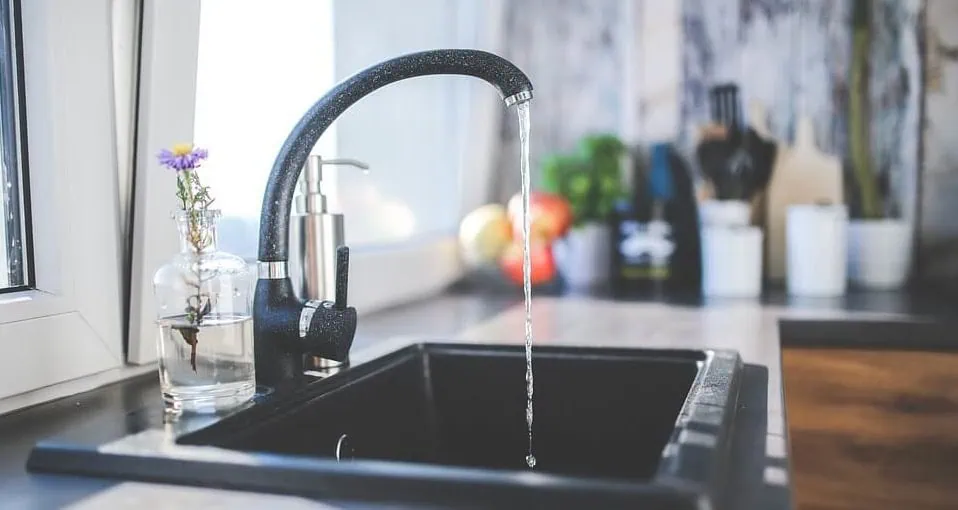Why do I have low water pressure in house?
Water pressure in your house can mean the difference between a gentle trickle and a powerful jet. Low pressure makes showering less invigorating, turns running a bath into a chore, and may cause your boiler to switch off when you need it the most. In short, low water pressure leads to wasted time and a whole lot of frustration. Read on to find out how water pressure is measured, why problems can arise, and what you can do to improve the pressure in your house.

How we measure water pressure
Water pressure is the force of the water that travels through the mains and into your house. This force is usually measured in bars, and sometimes in psi (pounds per square inch), with one bar being equal to 14 psi. Thames Water is obliged to provide at least one bar of water pressure to households, and this is the force needed to push water upwards to a height of 10 metres – the equivalent of a two-storey house.
Pressure readings are taken from the mains supply, at the external stop valve. This sits at the boundary of your property, within a small access point. This is where your water meter will be located too if you have one.
Tip: You don’t want your water pressure to be too high, as this can damage your pipes. The pressure level should be no more than four bars (60 psi).

Book a qualified plumber
- One hour priority attendance
- On call 24/7 for any plumbing emergency
- Half-hour rates from £42.75 + VAT
- £10 off when you book online
What causes low water pressure?
Plumbers in London often find that water pressure can be an issue in the capital’s apartment blocks, including townhouses with three stories or more. It’s also a common problem in some hilly parts of Greater London, such as Hampstead Heath and Highgate, because the water loses pressure due to the higher elevation.
If you’re in a built-up area, you may notice the pressure changes throughout the day. Population density in London means that your water pressure may be lower in the morning and evening, when a large number of people are getting showers, flushing toilets and running taps.
Small supply pipes
Thames Water says the width of your water supply pipe and the number of appliances attached can impact your house’s water pressure, especially in older houses. Pipes can sometimes provide water to only one tap at a time, so you’ll have problems running another tap or appliance that’s connected to the same pipe. If you try this while the water’s already running, you can expect the first tap or appliance to get the most water.
Partially closed stopcocks / valves
Also known as stop valves and stop taps, stopcocks control the flow of water to your pipes. If they aren’t fully open, they can restrict the flow of water from the mains. In addition to the mains stop valve outside the house, you’ll have one inside. Your internal stop valve is most likely beneath the kitchen sink.
Your external stop valve is owned by the water company. If it’s open yet the pressure here falls below one bar, it’s their responsibility to improve it. However, if they’re already providing a full bar and that isn’t enough for your house, it’ll be your responsibility to increase it.
Leaking pipework
Underground and underfloor leaks can cause low water pressure, but they’re rarely clear to the naked eye. One way to tell is by looking for changes in the water meter. If the numbers go up, but you haven’t used any extra water, then you likely have a leak somewhere in the plumbing system.
You can find out if there’s a leak by following these simple steps:
- Turn off all taps and appliances in your home, such as your dishwasher and washing machine
- Take a water meter reading
- Wait for as long as you can without using water (at least an hour)
- Now take a second meter reading
If the second reading is different from the first, there could be a leak in the pipework. Why not check out our video on detecting leaks underground to learn more?
If you think there’s a leak, then ask one of our leak detection specialists for help. They use advanced equipment (such as tracer gas and acoustic tests), to pinpoint external leaks buried underground, or to accurately detect internal plumbing leaks beneath your floors.
Clogged water supply pipes
When you think of a blocked pipe, you likely imagine a backed-up drainage system. Surprisingly, water supply pipes can also become clogged. Even minor blockages can affect the water pressure in your house, and you won’t know it’s happened until you get a qualified plumber to investigate. They can use specialist CCTV drain camera equipment to look for a clog, and if one’s discovered, they’ll show you the evidence and come up with a plan to clear it away.
Faulty plumbing
If only one fixture like a tap or shower is affected, then the problem is probably in the fixture itself rather than the water supply pipe. In addition, faucet aerators (used to create a more even stream and reduce splashing) can collect limestone and dirt – preventing a strong flow of water.
Tip: We recommend getting a plumber to investigate instead of trying to fix or replace fixtures yourself. A professional will have worked on similar fixtures, and they’ll know to turn off the water supply to prevent flooding. They can also check for further issues that might reduce your house’s water pressure.
How can you correct low water pressure?
The advice we give depends on whether you have low water pressure in a single tap or shower, or throughout the home. We cover some of these points below. If you have any questions about the following, please don’t hesitate to get in touch.
1. Give your water company a call
If the pressure’s low on the ground floor of your property when just one tap’s running, you can ask your water supplier to check the pressure at your mains stop valve. Thames Water states that if the problem lies with them, they will explain what they plan to do next. If not, they’ll advise on what you can do to alleviate the situation. Note that if the pressure from their pipe is below 70% of a single bar, lasts for over an hour, and occurs twice in 28 days, you may be entitled to a payout under the customer guarantee scheme.
2. Ensure stop valves are open
This is one to try when you have low water pressure throughout the home. Check that the internal stop tap is completely open, then do the same for the one outside.
How to check that your stop valve is open fully
You can do this by closing the valve first. Check that it’s closed by running a tap until nothing comes out. This shouldn’t take longer than a minute or so. Next, open the stop valve all the way. When you can’t open it any further, make one quarter turn back. Doing this ensures you’ll be able to move the stopcock again in the future, without difficulties. Don’t try to force opening the tap any more than it’s designed to go. You could get the tap stuck or even break it off.
3. Install a shower pump or power shower
If the problem is limited to an upstairs shower and you have a gravity-fed water system, you could get a shower pump that raises the pressure. Alternatively, you could choose a power shower, which takes hot water from your tank and mixes it with cold water from your pipes. The booster found within the shower unit then creates the pressure you need.
Shower pumps and power showers are suitable for gravity-fed systems, but if you have a combi boiler, then you may want to consider an electric shower. This takes water from the mains and then heats it in the shower unit, bypassing the boiler entirely. A higher kilowatt rating generally means a greater boost, but it’s still limited by the pressure from the mains.
Important! Ask a plumber to suggest a make and model with the right capacity and then install it on your behalf. If you were to get the wrong one, it could burn out and need replacing well before the end of its normal lifespan. Make sure your chosen plumber has the experience to recommend, install and maintain them for you. All of our plumbers can do just that, giving you trustworthy advice and the best solution available.
4. Consider a mains booster
Mains water booster sets improve the water flow rate of your entire property. They come in different sizes, boast different flow rates, and some models are approved by the Water Regulations Approval Scheme (WRAS). Anyone with low water pressure can have a booster installed, as long as they consider the following points:
- Boosters connect to the main water supply, which means there’ll be changes to the pipework. That’s why you’ll need a specialist you can trust.
- Due to their size, booster sets are usually installed in a basement, utility space or under the stairs. Your plumber will point out the best location for your new booster. In commercial premises and blocks of flats, these pumps are typically found in a basement or plant room.
- Some buildings have water pipes that are too thin for booster pumps to work efficiently. The only solution is to replace these pipes with wider ones. If you choose us for the installation work, we can make any upgrades needed for your booster to run efficiently.
A mains booster will add some extra kick to your taps, fill your bath up quicker, and increase the pressure in your shower. Note that UK law restricts the amount of water drawn from the mains to 12 litres a minute, so there’s a legal limit on how effective your booster can be.
5. Don’t put off the professional checks
Corroded pipes can block up the water supply, just as a leak can impact the amount of water you waste. Given that both issues will only get worse with time, we suggest booking an experienced plumber at the first sign of an issue. If you think that water’s escaping from water supply pipes, our leak detection experts will be able to find the culprit using non-invasive methods.
Whether you have a leak, want a power shower, or would like a mains booster installed, we’re here to help. Aspect can advise on ways to combat low water pressure in your home, then provide the high-quality care that your property deserves.
Areas we cover

Our plumbers are available throughout Greater London and the Home Counties. Our service area includes Berkshire, Buckinghamshire, Essex, Hertfordshire, Kent, and Surrey. Use our postcode checker to see instantly if we cover your area.
If you need a plumber outside of this coverage area, we may still be able to help. Our team will check availability and see if one can be scheduled for your location.
Call or submit a callback request, and a member of our team will be in touch with you.
Was this article helpful?
Think we could improve this article? Please let us know